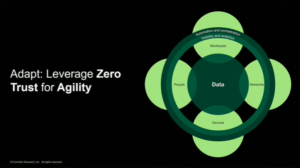
Sustainability is a genuine objective for many enterprises, driven by their desire to be good stewards of the planet. Other companies want to hit a specific ranking to attract more customers and investments. Regardless of the reasons, enterprises now look to cloud computing to lower costs and provide good ESG (environmental, social, governance) scores. Many pitch cloud computing to decision-makers as a technology that will help an enterprise meet sustainability objectives because cloud computing is green.
Don’t take that statement at face value. Many assumptions about sustainability and cloud computing are just wrong. Let’s bust some of these green myths and look at the realities of cloud computing as a technology that can drive sustainability.
Myth #1: Cloud computing is inherently green. Although cloud computing can reduce energy usage and carbon emissions, it is not automatically green. Cloud computing still requires energy to power data centers and maintain infrastructure, and not all cloud providers use renewable energy or implement energy-efficient practices.
You must look beyond the word cloud to gauge a system’s sustainability. For example, if you audit a particular cloud computing implementation, you might find that on-premises systems are more carbon-neutral than many public cloud implementations, depending on what powers these systems. Some cloud deployments use coal-fired power, and some traditional systems within an enterprise data center use renewables.
Myth #2: Sustainability is based on the power consumed by the providers’ platforms and infrastructure. This myth lets the developers, system designers, cloud architects, and even infrastructure engineers off the hook in the fight to reduce emissions. That’s a problem.
The efficiency of applications and systems running on cloud platforms determines power consumption. Let’s say you have two applications, one designed for power efficiency and one not. The application designed for power efficiency might consume one-fourth as much power as the application that did not undergo efficiency testing.
The good news? Many devops processes and toolchains now include power efficiency checks (which often align to cost efficiency checks) as part of enterprise finops programs.
Myth #3: It’s the cloud provider’s job to provide a carbon-neutral platform and infrastructure. Much like security, sustainability is a shared responsibility model. The cloud provider certainly plays a role in that you can’t control how they consume or manage power. You must trust their decisions. However, it’s the job of the enterprise to validate and verify the sustainability of each cloud provider they use, as well as to do their own work to ensure that their systems are near 100% in terms of energy utilization.
I’m surprised at how often cloud computing pros push the responsibility for sustainability to the cloud providers. It just does not work that way. Suppose you choose a cloud provider that does an excellent job leveraging renewables. Your enterprise’s inefficient use of cloud resources and overprovisioning of those resources could easily counter any sustainability gains.
We’ll get better as time progresses. However, the most dangerous challenges to cloud and sustainability are common misunderstandings that become assumed truths.
Copyright © 2023 IDG Communications, Inc.


